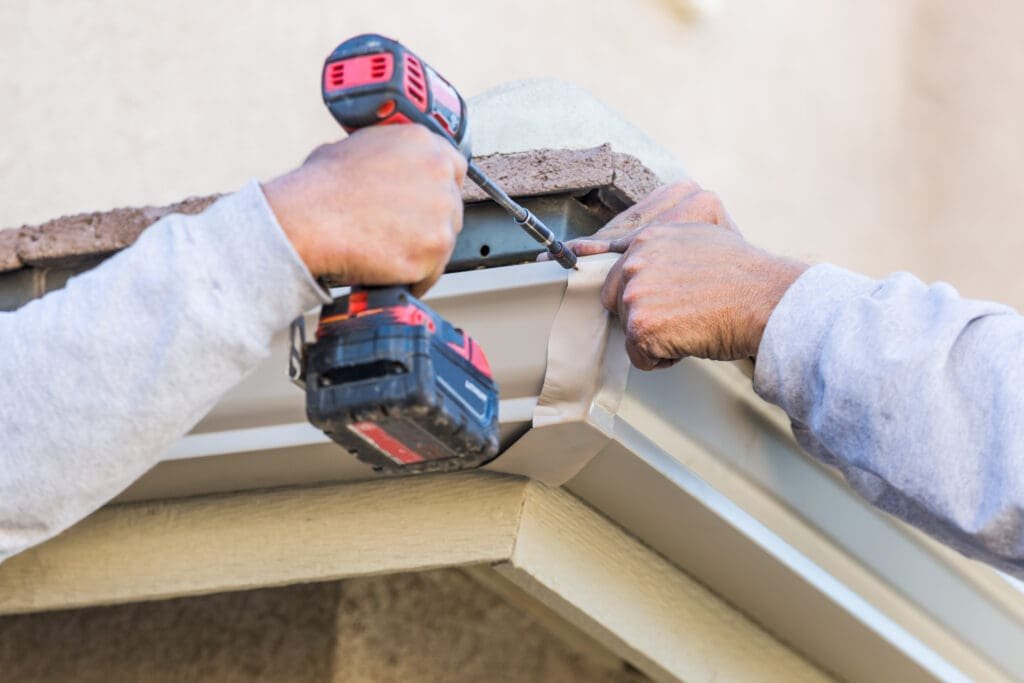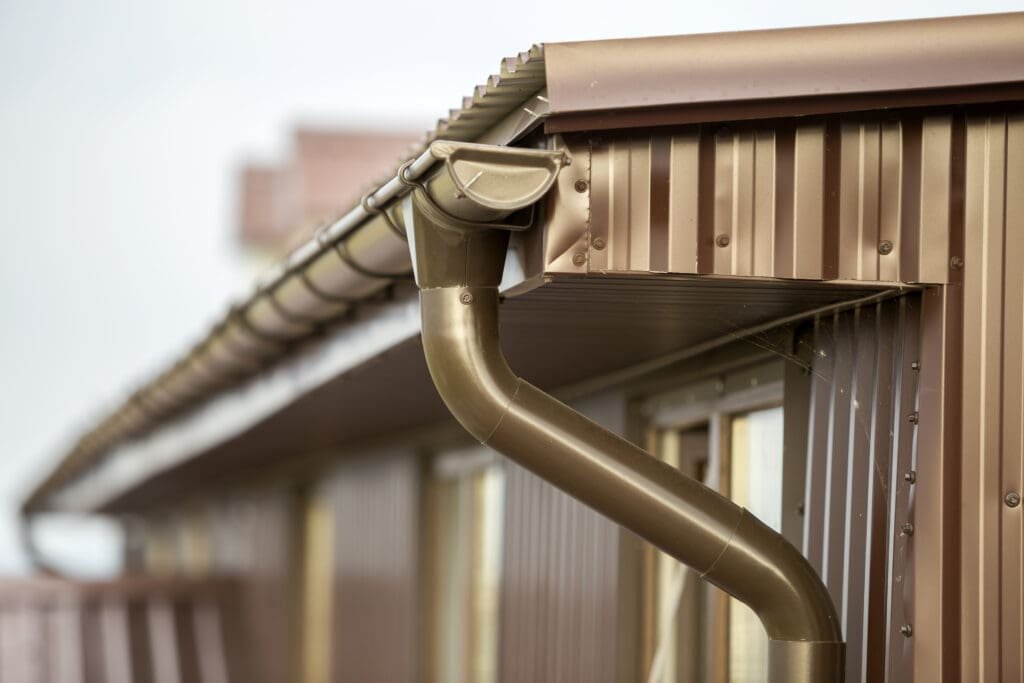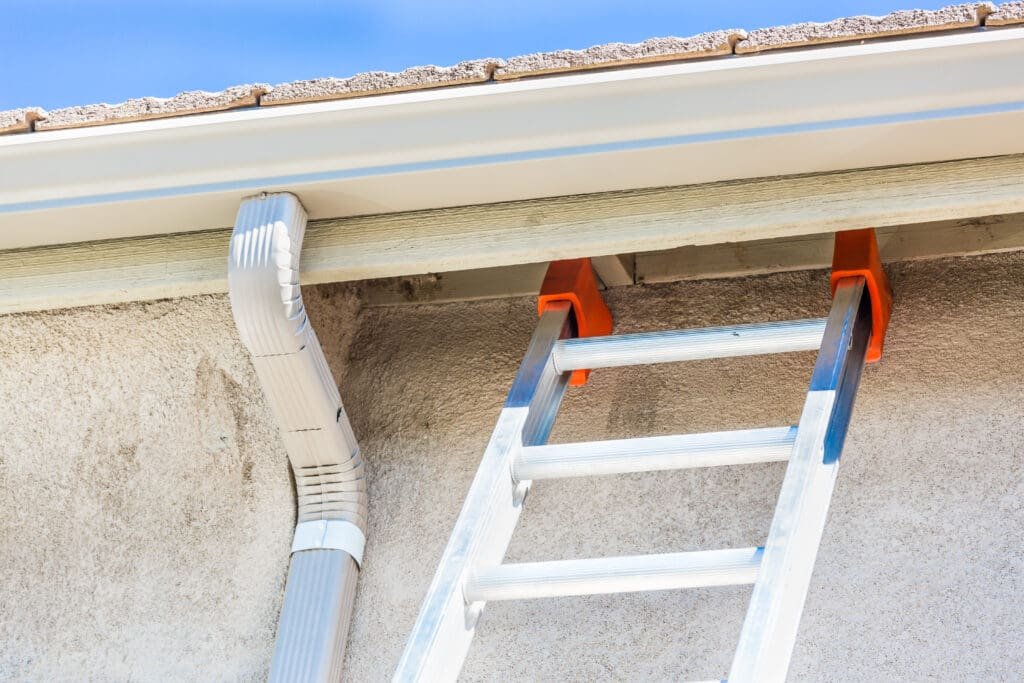Replacing your gutters is an important part of home maintenance that should not be overlooked. Gutters play a crucial role in protecting your home from water damage by directing rainwater away from the foundation. In this comprehensive guide, we will explore the importance of gutters, signs that indicate the need for replacement, preparing for the gutter replacement process, a step-by-step walkthrough of the replacement process, post-installation care and maintenance, and address frequently asked questions about gutter replacement.
Understanding the Importance of Gutters
The Role of Gutters in Home Maintenance
Gutters are more than just a decorative feature; they serve a vital purpose in safeguarding your home’s structural integrity. By collecting rainwater from the roof, gutters channel it away from the foundation, preventing water damage and costly repairs. Without properly functioning gutters, water can seep into the foundation, leading to cracks, mold growth, and structural issues.
Additionally, gutters help protect your landscaping by directing water flow away from delicate plants and flowers. This can prevent erosion and soil depletion, preserving the beauty and health of your outdoor spaces. Properly maintained gutters also reduce the risk of basement flooding, as they prevent excess water from seeping into the ground and finding its way into your home.
Signs Your Gutters Need Replacement
Recognizing when it’s time to replace your gutters is critical to preventing further damage. Some common signs include rust, rot, cracks, sagging, frequent clogs, and water pooling around the foundation. If you notice any of these indicators, it’s essential to address them promptly to avoid more extensive problems down the road.
Another sign that your gutters may need replacement is the presence of pests and insects. Clogged or damaged gutters can become breeding grounds for mosquitoes, ants, and other unwanted critters, posing a health risk to your family. By ensuring your gutters are in good condition, you can help maintain a safe and healthy environment both inside and outside your home.
Preparing for Gutter Replacement

Evaluating Your Current Gutter System
Prior to replacing your gutters, it’s crucial to assess the condition of your current system. Look for visible signs of damage or wear and note any areas that require attention. This evaluation will help determine the scope of the replacement project and ensure that you choose the appropriate materials and styles for your new gutters.
Inspecting your current gutter system involves more than just a visual assessment. It’s also important to check for proper drainage, any signs of water leaks, and the overall functionality of the gutters. Understanding how well your current system is performing will guide you in making informed decisions for the replacement.
Choosing the Right Gutter Material
When selecting the material for your new gutters, consider factors such as durability, maintenance requirements, and aesthetic appeal. Common options include aluminum, copper, steel, and vinyl. Each material has its advantages and disadvantages, so it’s important to weigh your priorities and consult with professionals if needed.
Aluminum gutters are lightweight and resistant to rust, making them a popular choice for many homeowners. Copper gutters, on the other hand, are known for their durability and elegant appearance, but come at a higher price point. Steel gutters are strong and can withstand harsh weather conditions, while vinyl gutters are affordable and easy to install, but may not be as durable in the long run. Consider your budget, climate, and maintenance preferences when deciding on the right material for your new gutters.
The Gutter Replacement Process Explained

When it comes to replacing your gutters, a systematic approach is crucial for a successful outcome. Understanding the intricacies of the gutter replacement process can help you appreciate the importance of each step involved. From the initial assessment to the final installation, every stage plays a vital role in ensuring the functionality and longevity of your new gutter system.
Step-by-Step Guide to Gutter Removal
The first step in the gutter replacement process is removing the old gutters. This process involves safely dismantling the existing system, including downspouts and brackets. It is essential to exercise caution during removal to avoid causing any unnecessary damage to your home or premises. Once the old gutters are removed, the site will be ready for the installation of the new system.
Inspecting the underlying structure is a critical part of the removal process. This inspection helps identify any potential issues such as rot, mold, or water damage that may have been hidden by the old gutters. Addressing these issues before installing the new gutters is essential to prevent future problems and ensure a solid foundation for the replacement system.
Installing New Gutters: A Detailed Walkthrough
Installing new gutters requires precision and attention to detail. This section will provide a step-by-step walkthrough to guide you through the installation process. From measuring and cutting gutter sections to attaching them securely to the fascia boards and aligning the downspouts, each step will be explained thoroughly to ensure a successful replacement operation.
Properly sealing the joints and ensuring a seamless connection between gutter sections is crucial for preventing leaks and maintaining the efficiency of your new gutter system. Additionally, incorporating gutter guards or leaf screens during the installation process can help prevent debris buildup and clogging, prolonging the lifespan of your gutters and reducing the need for frequent maintenance.
Post-Installation Care and Maintenance

Ensuring the longevity and effectiveness of your gutter system goes beyond just the initial installation. Regular maintenance is key to preserving the integrity of your home and preventing costly damage. One crucial aspect of post-installation care is incorporating regular gutter cleaning into your home maintenance routine. By taking the time to remove leaves, twigs, and debris that accumulate in your gutters, you can prevent clogs and potential water damage to your property. Experts recommend cleaning your gutters at least twice a year to maintain free-flowing water drainage and protect your home.
Regular Gutter Cleaning and Why It Matters
After gutter replacement, it’s crucial to incorporate regular cleaning into your home maintenance routine. Over time, leaves, twigs, and debris can accumulate in your gutters, leading to clogs and potentially damaging your property. Regular cleaning, typically twice a year, ensures that your gutters remain free-flowing and minimizes the risk of water damage.
Long-Term Maintenance Tips for Your New Gutters
While regular cleaning is essential, there are additional long-term maintenance tips to consider to ensure the optimal performance of your new gutters. Checking for leaks and addressing them promptly can prevent water seepage into your home’s structure. After severe weather events, it’s advisable to inspect and realign your gutters to maintain proper water flow. Trimming nearby trees can prevent branches from damaging your gutters and ensure they remain clear of debris. Additionally, ensuring that water flows away from your home’s foundation can help prevent basement flooding and structural issues. By adhering to these maintenance practices, you can extend the lifespan of your gutter system and protect your home for years to come.
Frequently Asked Questions About Gutter Replacement

How Often Should Gutters Be Replaced?
The lifespan of gutters varies depending on factors such as material quality, exposure to weather elements, and overall maintenance. On average, gutters can last anywhere from 20 to 50 years. However, regular inspections are essential to identify signs of deterioration and determine if replacement is necessary within this timeframe.
Factors such as heavy storms, debris buildup, and the growth of mold or mildew can accelerate the deterioration of gutters. It is crucial to monitor the condition of your gutters regularly, especially after severe weather events, to ensure they are functioning correctly and protecting your home from water damage.
Can I Replace Gutters Myself or Should I Hire a Professional?
Gutter replacement can be a challenging task, requiring specific knowledge and skills. While some homeowners might choose to replace gutters themselves, it is generally recommended to hire a professional to ensure proper installation and minimize the risk of damage. Professionals have the expertise, tools, and experience to complete the job efficiently and effectively.
Improper installation of gutters can lead to issues such as leaks, inadequate water drainage, and structural damage to your home. By investing in professional gutter replacement services, you can have peace of mind knowing that the job is done correctly and that your home is protected from potential water-related problems.
By understanding the importance of gutters, recognizing signs for replacement, properly preparing for the process, and following post-installation care and maintenance, you can ensure that your gutter system functions optimally, protecting your home for years to come. If you have any specific questions or concerns about gutter replacement, consult with a trusted





